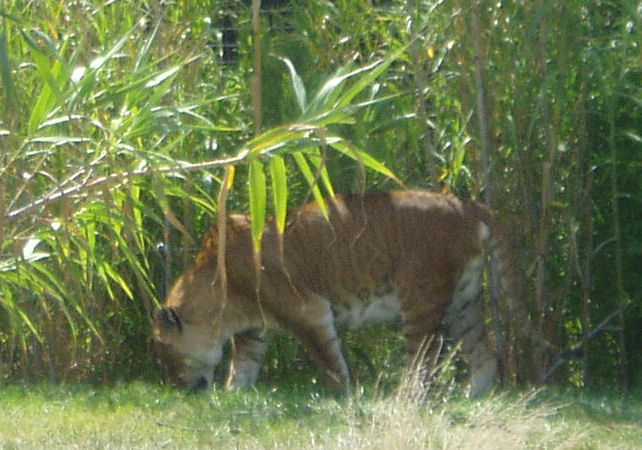
Tiglon
A tiglon (pronounced /ˈtaɪɡlən/) or tigon is a hybrid cross between a male tiger (Panthera tigris) and a lioness (Panthera leo), hence has parents with the same genus but of different species. The tiglon is not currently as common as the converse hybrid, the liger; however, in the late 19th and early 20th centuries, tiglons were more common than ligers.Tiglons can exhibit characteristics of both parents: they can have both spots from the mother (lions carry genes for spots — lion cubs are spotted and some adults retain faint markings) and stripes from the father. Any mane that a male tiglon may have will appear shorter and less noticeable than a lion’s mane and is closer in type to the ruff of a male tiger. It is a common misconception that tiglons are smaller than lions or tigers. They do not exceed the size of their parent species because they inherit growth-inhibitory genes from the lioness mother, but they do not exhibit any kind of dwarfism or miniaturization; they often weigh around 180 kilograms (400 lb).A century ago, tiglons were evidently more common than ligers. Gerald Iles, in At Home In The Zoo (1961) was able to obtain three tiglons for Manchester’s Belle Vue Zoo, but wrote that he had never seen a liger. A number of tiglons are currently being bred in China.
Tiglon love making
At the Alipore Zoo in India, a female tiglon named Rudhrani, born in 1971, was successfully mated to an Asiatic Lion named Debabrata. The rare, second generation hybrid was called a litigon (pronounced /ˌlaɪˈtaɪɡən/). Rudhrani produced seven litigons in her lifetime. Some of these reached impressive sizes—a litigon named Cubanacan (died 1991) weighed at least 363 kilograms (800 lb), stood 1.32 metres (4.3 ft) at the shoulder, and was 3.5 metres (11 ft) in total length. When is the year of the tiglon?







